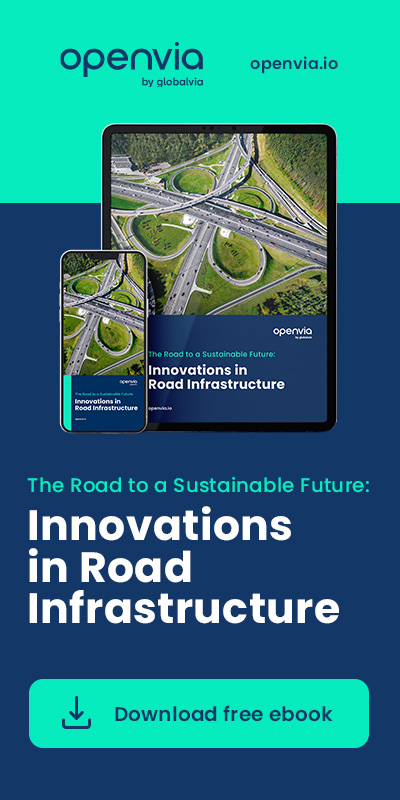Smart mobility is evolving rapidly, and cloud computing services are at the heart of this transformation. You rely on connected platforms and digital infrastructure to move efficiently in modern cities, even if you rarely think about it. These systems coordinate traffic, monitor vehicles, and manage data in real time. Without the scalability and security of cloud-based technologies, the complexity of managing smart mobility would quickly become unmanageable. As cities embrace digital transformation, cloud solutions provide the backbone for integration, automation, and long-term sustainability.
The role of cloud computing in smart mobility
Cloud computing services enable urban transportation networks to become more responsive, efficient, and user-focused. By moving key functions to an On Cloud platform, cities and infrastructure operators gain the flexibility to scale resources as demand fluctuates.
Imagine a city where buses, ride-sharing vehicles, and connected traffic lights constantly generate data. Traditional IT infrastructure would struggle to process such massive data streams in real time. Cloud services make it possible to collect, store, and analyze information from thousands of sensors, GPS trackers, and IoT devices simultaneously.
The real advantage of cloud computing lies in its ability to integrate multiple mobility solutions within a single ecosystem. From public transit schedules and bike-sharing availability to emergency response systems, the cloud allows seamless coordination and faster decision-making. When your navigation app reroutes you to avoid traffic, or when a smart parking system directs you to an available spot, cloud-based platforms are doing the heavy lifting behind the scenes.
Additionally, cloud services enable cost-effective operations. Instead of investing heavily in physical servers, urban mobility providers use subscription-based platforms that scale according to demand. This flexibility not only saves money but also improves the reliability and sustainability of smart mobility initiatives.
Cloud computing also empowers data-driven decision-making. By analyzing historical and real-time data, city planners and operators can identify traffic trends, improve safety measures, and enhance urban mobility experiences. The ability to visualize and model transportation patterns helps cities anticipate problems rather than react to them.
Ensuring scalability and security in infrastructure management
Scalability is one of the key strengths of cloud computing services. As populations grow and urban mobility demands increase, the volume of data generated by connected vehicles and infrastructure rises exponentially. An integration platform powered by the cloud can handle this surge without performance issues.
For example, during peak travel seasons or major public events, the demand on urban mobility systems can spike. Cloud-based solutions allow operators to instantly scale computing power and storage to meet temporary needs. Once the event ends, resources can scale back to reduce costs. This elastic model ensures that cities only pay for the infrastructure they need, when they need it.
Security is equally critical. Managing transportation infrastructure involves sensitive data, including vehicle locations, user profiles, and sometimes financial transactions. Cloud platforms used in smart mobility must adhere to strict cybersecurity protocols, including encryption, multi-factor authentication, and continuous monitoring.
Infrastructure managers face additional challenges with data privacy regulations, especially when handling personal information across multiple jurisdictions. Cloud service providers offer compliance frameworks that help organizations meet international standards like GDPR or ISO 27001. Maintaining public trust in smart mobility requires robust and transparent security measures.
Edge computing often works in tandem with cloud services to enhance both scalability and security. By processing some data locally, such as accident detection or traffic signal adjustments, cities reduce latency while keeping critical information secure. The combined approach of cloud and edge computing delivers fast, reliable, and protected smart mobility solutions.
Resilience is another benefit of cloud-enabled infrastructure management. Disasters, system failures, or cyberattacks can disrupt traditional IT networks. Cloud services with automated backups and failover protocols ensure that mobility platforms remain operational, minimizing downtime and protecting critical urban services.
Strategies for implementing cloud services in the sector
Successfully integrating cloud computing into smart mobility requires careful planning and alignment between public and private stakeholders. Below are key strategies to guide implementation:
1. Conduct a comprehensive infrastructure assessment
Before migrating to an On Cloud platform, operators must understand current assets, system gaps, and integration needs. Mapping existing IT and transport infrastructure helps define a clear roadmap for cloud adoption.
2. Start with pilot projects
Testing cloud-enabled mobility solutions on a smaller scale reduces risks and builds stakeholder confidence. Pilot initiatives (like smart parking or real-time bus tracking) allow cities to refine processes before expanding.
3. Prioritize data security and privacy
Cybersecurity must be a central consideration from the start. Encrypt all data transfers, enforce strict access controls, and choose cloud providers with proven compliance certifications. Educating your team about security practices is equally important.
4. Leverage integration platforms
A modern integration platform ensures that data flows seamlessly between systems. Connecting traffic management, public transit, emergency response, and even micro-mobility services in a unified cloud environment delivers maximum value and efficiency.
5. Implement real-time monitoring and analytics
Continuous monitoring enables operators to detect anomalies, optimize routes, and predict maintenance needs. Cloud computing services empower cities to make data-driven decisions quickly and effectively.
6. Ensure interoperability across systems
Smart mobility relies on multiple vendors, devices, and services. Cloud-based integration simplifies interoperability, reducing the complexity of managing diverse platforms and making it easier to adapt to future innovations.
7. Plan for long-term scalability
Your mobility system should be future-ready. Cloud solutions allow you to accommodate new transport modes, growing populations, and emerging technologies like autonomous vehicles without overhauling existing infrastructure.
Looking toward smarter, sustainable cities
The adoption of cloud computing services is redefining how cities plan, operate, and optimize their transportation networks. By embracing scalable and secure cloud solutions, urban mobility systems become more resilient and efficient. Smart mobility depends on the cloud not just for operational improvements but also for advancing environmental and social goals.
When your city leverages cloud-based mobility solutions, it can reduce congestion, improve air quality, and deliver safer, more reliable transport experiences. Cloud services make it possible to connect every part of the mobility ecosystem, from buses and bikes to traffic lights and emergency response.
Ultimately, the combination of scalability, security, and integration ensures that smart mobility is not just a vision for the future, it is an achievable, sustainable reality. Cities that invest in cloud-enabled infrastructure management today will be better prepared to face the demands of tomorrow.






